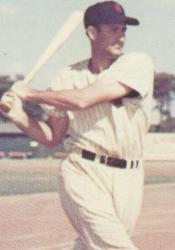An automated email showed up in my inbox yesterday to remind me that my sponsorship fee for the University of the Illinois page of Baseball Reference web site was due. Of course, Baseball Reference is free to use… the sponsorship is a small thing I can do help out a web site that I use pretty much on a daily basis. If you haven’t seen the site recently, I highly recommend you check it out. Sean Forman is adding new features to it all the time.
One thing I hadn’t noticed till recently is the Neutralized Stats. This is a way to compare players’ stats across the board.
We adjust all of a player’s seasons from the park and league context of the seasons they played in into either a “neutral” setting (which is 100 park factor with 162-game season, 90% of runs earned, and 715 runs/team), or into a setting selected by the user with a particular year, league (with its runs/game and earned runs percentage) and home team (with its park factor).
Neutralized Stats is described in detail here. You can access Neutralized Stats from all player pages at Baseball Reference.com.
By the way, if you haven’t heard our interview with Sean Forman, the force behind Baseball Reference.com, take a listen. It’s an interesting show.


